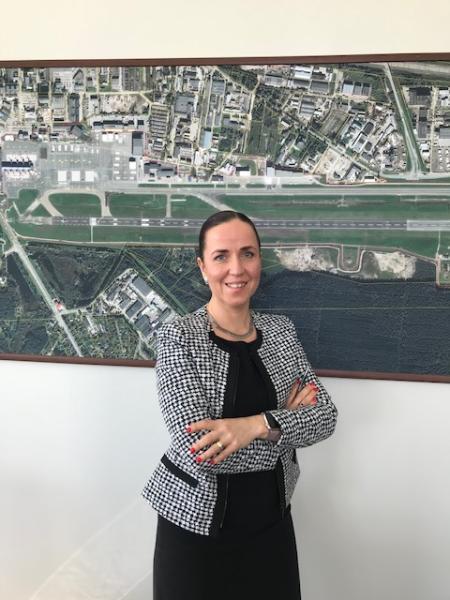Tallinn Airport investment helps small Estonia outrank Europe’s jumbo airport hubs
Find out how a Tallinn Airport investment makes Estonia a key link between Europe and Asia:
- On Europe’s periphery, Tallin is winning the fight against bigger airports, with passenger traffic up 20% a year
- Learn about the smart infrastructure upgrade by the Tallinn Airport investment from the European Investment Bank
- How does Estonia’s northerly position help Tallinn win the fight for flights against bigger European airports
Subscribe to Future Europe on iTunes, Spotify and Acast.
Future Europe features a podcast episode from each of the EU’s 28 Member States. Each episode tells the story of a project that illuminates the way Europeans will live in the future. All the stories are told through the voices of people like Piret Mürk-Dubout—people involved in the projects.

A single terminal with big growth
Estonia sits on the northern edge of Europe. But this small country with a population of only 1.3 million is attracting ever more visitors to its beautiful medieval capital city Tallinn. That’s in no small part due to the development of the airport just 4 kilometers from the ancient cobbled lanes of the old town.
The number of people using the airport’s single terminal has grown enormously in recent years. In 2017, travellers increased by almost 20% compared with the previous year. According to Piret Mürk-Dubout, the airport’s CEO, an efficient, welcoming gateway to the world is vital for the country.
“Connectivity for the Estonian economy, for Tallinn Airport, is the way we contribute to Estonian Society,’ she told the European Investment Bank’s Future Europe podcast. “Estonia is situated on the periphery of Europe – so we need to be attractive in the way we operate. We need to be providing the highest quality of safety and smoothness.”
Investing for the Present and the Future
To keep up with growing demand and to attract even more passengers in the future, the airport has undertaken a series of improvements. These include:
- extending the runway with new lighting and drainage facilities
- increasing the number of spaces for aircraft on the ground
- reconfiguring the terminal for greater numbers and comfort
- constructing a new passenger car park.
None of this comes cheap, and the EIB provided a loan of €30million to help with the work.
The EIB’s financing has also been important in attracting other loans to cover all the work required. Marina Ismaila, the EIB loan officer responsible for overseeing the deal, told the Future Europe podcast the airport’s future is now more secure
“For small airports it is quite difficult to stay profitable. The EIB loan was offered on very favorable terms, enabling Tallinn Airport to complete its investment programme, attract other investors and reach economic profitability.”
Tallin Airport investment for work and play
The investment is certainly paying off in terms of popularity. A 2017 survey for the ‘Sleeping in Airports Guide’ voted Tallinn as the third-best airport in Europe and ninth-best in the world. It has won plaudits from passengers for its coziness, with locally themed gates (complete with deep armchairs and wall-size photos of rural backdrops), an in-terminal gym and even an airport book exchange.
The number of routes to and from Estonia are also growing. Viktoria, who is 25 and from Tallinn, is lining up to check in her bags for the British Airways flight to London Heathrow, which was introduced just a year ago. For Viktoria, the airport’s smaller size is a bonus. ”Its’ cozy,” she says, “and it’s easier to get around than bigger European airports. And I like the beautiful décor and traditional stuff in the lounges.”
Business travel target for Tallinn airport investment
But the value of the airport goes beyond catering for vacationing travelers. Estonia’s size and location lend its international gateway an added element of importance, says Viljar Lubi, a senior official at the Estonian Ministry of Economic Affairs. “unless we get business people here we can’t prosper.”
Lubi points out that Tallinn, along with the its northern neighbor Helsinki, offer the shortest air routes from Europe to Asia. That, he says, is a distinct advantage for the small Baltic nation.
“Whenever I talk to business people, wherever they are from, they never ask how much it costs to get to Estonia. They always ask how long it takes. This is the crucial question and our airport plays a crucial role there.”
Work is on-going at the airport to complete the current project and to consider what is needed for the future. For Viljar Lubi, these efforts are driven by necessity rather than choice. “We don’t have the luxury to wait and see. Every extra passenger that comes through the port has a very big impact on our economy as well….so that only the sky is the limit.
